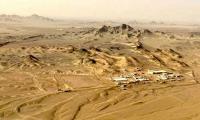In June, record heat waves hit Russia, Northern Europe, Canada, and the United States. When these increasingly common weather phenomena began killing hundreds of people, the US media focused its coverage on a single record breaking 116-degree day in Portland, Oregon.
When unprecedented flooding in Germany and Western Europe had killed more than 100 people by July 16, I watched as three US network news shows rolled that report into coverage of the West’s wildfires and California’s worst drought in 1,200 years.
Yet, none of the three main TV news outlets – NBC, CBS, or ABC – mentioned climate change, avoiding the most obvious news hook. A group of scientists later released a rapid assessment report concluding Oregon’s heat wave could not have happened without human-induced climate change.
When more than a billion intertidal sea creatures (including mussels, anemones, and sea stars) recently broiled to death in the Pacific Northwest, it got limited attention from the media. At the same time, there’s been almost no national coverage of the millions of dead marine animals, including dolphins and sea turtles, that continue to washashore in St Petersburg, Florida, due to recurrent red tides linked to pollution and warming waters.
The cause of the collapsed condominium towers in Surfside, Florida, may take months to determine. But one suspected contributing cause is saltwater intrusion from sea-level rise filling the porous limestone on which much of south Florida is built. If that's the case, the impacts could redefine life in the Sunshine State.
There’s also been little discussion of how the migration of refugees from Central America was spurred by two major storms, Eta and Iota, and a long drought that has displaced farmers and others in Honduras and Guatemala.
When I was seven years old growing up in New York City, there were an average of eight summer days that exceeded 90 degrees. Today, sixty-three years later, there's an average of eleven days a year when this happens. (You can use a database created by The New York Times to look up this information for your own community.)
I long ago moved to California, where the wildfire disasters could soon be eclipsed by sea-level rise that could see a seven-foot surge in this century, according to the state's legislative analyst’s office. This would displace up to half a million Californians at a cost of more than $150 billion, according to a study by the US Geological Service.
Climate change is separate from, but also contributing to, global species extinction that’s happening faster than at any time in the past sixty-six million years – when a meteor took out the dinosaurs. Today, the planet’s sixth extinction primarily involves the direct killing of animals and habitat destruction from human causes other than climate change.
Since 1970, half of the large wild mammals on earth have disappeared. (Actually, we know where they went – onto our plates and trophy walls.) North America's wild birds have declined by almost a third. And yet, Mexico has just permitted fishing in the last refuge of the remaining ten known vaquitas, a small species of porpoise that will soon join China’s river dolphins in the void of extinction. With fewer than 400 members left, the much larger North American right whale that migrates along the crowded eastern seaboard of the United States may not be far behind.
Wisconsin’s acclaimed conservationist Aldo Leopold once said, “To save every cog and wheel is the first precaution of the intelligent tinkerer.” We’ve been tinkering with nature for a long time, but not very intelligently. As hunter-gatherers, we maintained a fair balance with other parts of the living machine that is our earth's ecosystem.
Excerpted: ‘The Climate Crisis Has Gone Critical’
Commondreams.org
Disturbances that began in 2023 with attack on school have escalated rapidly in recent weeks
Obvious ineptness and lack of empathy that underpins our criminal justice system need not be recounted
Women constitute about 22.63% of formal labor force, while men make up 84.79%
Responsibility falls on Global North to address issues facing Global South before it collapses entirely
FAO recognises home gardening as crucial strategy to enhance household food security and nutrition, particularly in...
Pakistan’s judicial system has evolved in a complex manner since country’s inception







